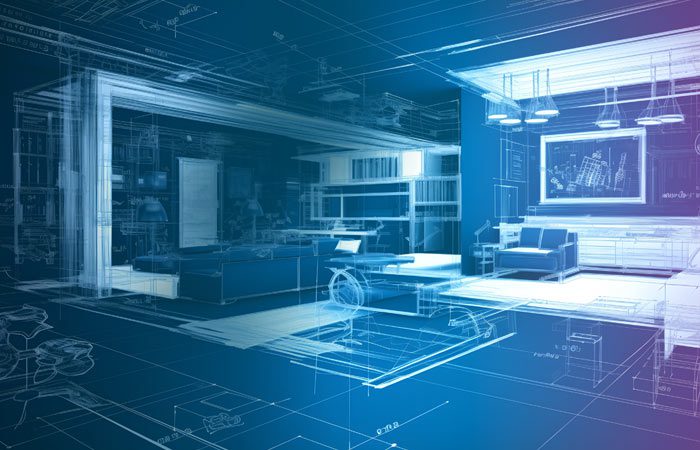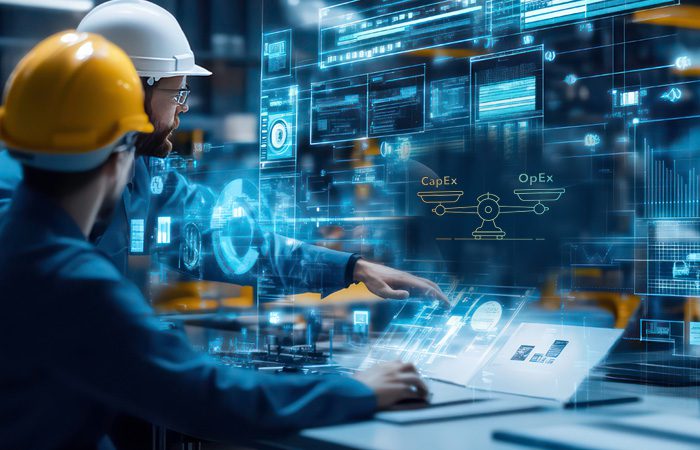
Transforming Hospitality: A Deep Dive into the Impact of Building Information Modeling (BIM)
The hospitality industry is undergoing a profound transformation, driven by technological advancements that seek to enhance guest experiences, optimize operational efficiency, and ensure sustainable infrastructure. At the forefront of this revolution is Building Information Modeling (BIM), a comprehensive and collaborative approach to building design, construction, and management. In this blog post, we will explore the multifaceted ways in which BIM is reshaping the landscape of the hospitality sector, from the initial design stages to ongoing facility management.
- Designing Experiences: Precision in Hospitality Architecture
In the hospitality industry, the design of a space is not just about aesthetics; it’s about creating memorable and immersive guest experiences. BIM serves as a powerful tool for architects and designers to bring their visions to life with unparalleled precision. Through the creation of detailed 3D models, hospitality professionals can visualize the entire space, including rooms, lobbies, restaurants, and recreational areas.
This precision goes beyond mere visualization; it enables stakeholders to explore different design options, experiment with layouts, and assess the impact of various elements on the overall guest experience. Whether it’s optimizing room configurations for better views or designing spaces that foster social interaction, BIM empowers architects to fine-tune every aspect of hospitality architecture with a focus on enhancing guest satisfaction.
- Efficient Project Delivery: Time and Cost Savings
One of the key challenges in hospitality construction is the need for timely project delivery to meet market demands. BIM addresses this challenge by streamlining the entire construction process. The clash detection capabilities of BIM allow project teams to identify and resolve conflicts between various systems, such as electrical, plumbing, and HVAC, before construction begins. This minimizes the risk of rework and delays, ensuring that projects stay on schedule.
Additionally, BIM facilitates accurate cost estimation by providing detailed information about materials, labor, and other project-related expenses. This allows project managers to create more precise budgets, reducing the likelihood of cost overruns. The combination of clash detection and cost estimation contributes to the overall efficiency of project delivery in the hospitality industry.
- Sustainability in Hospitality Construction
As sustainability becomes a central concern for industries worldwide, the hospitality sector is no exception. BIM plays a crucial role in promoting sustainability in hospitality construction by providing tools for eco-friendly design and resource optimization. From energy-efficient HVAC systems to the use of sustainable materials, BIM enables architects and engineers to make environmentally conscious decisions at every stage of the design process.
Moreover, BIM supports the analysis of a building’s environmental impact over its entire lifecycle. This includes assessing energy consumption, carbon footprint, and resource usage. By integrating sustainability considerations into the design and construction phases, the hospitality industry can contribute to global efforts to reduce environmental impact and create more eco-friendly establishments.
- Optimizing Space Utilization for Enhanced Guest Comfort
Space is a valuable commodity in the hospitality industry, and its efficient utilization is critical for both guest comfort and operational efficiency. BIM allows for the creation of detailed space models that take into account every square foot of a facility. This includes guest rooms, common areas, meeting spaces, and service areas.
With BIM, hospitality professionals can optimize space utilization to enhance guest comfort and experience. This includes designing ergonomic and visually appealing spaces, ensuring efficient traffic flow, and maximizing the functionality of each area. The ability to visualize and analyze space utilization in a digital environment before construction enables stakeholders to make informed decisions that prioritize both guest satisfaction and operational efficiency.
- Adaptable Design for Changing Needs
The hospitality industry is dynamic, with evolving guest preferences and changing market trends. BIM facilitates adaptable design by allowing stakeholders to easily modify and update the digital model as needed. Whether it’s incorporating new technologies, reconfiguring spaces to meet changing demands, or optimizing layouts for improved efficiency, BIM provides a platform for continuous design evolution.
This adaptability is particularly crucial in the post-pandemic era, where health and safety considerations have become paramount. BIM enables the swift implementation of design changes to accommodate new hygiene protocols, social distancing measures, and emerging trends in the hospitality sector. The ability to quickly and efficiently adapt designs ensures that hospitality facilities remain relevant and competitive in a rapidly changing industry landscape.
- Streamlining Facility Management Through BIM
Once a hospitality facility is built, the journey doesn’t end. Effective facility management is essential for ensuring the ongoing success and sustainability of the establishment. BIM serves as a digital twin of the physical facility, providing comprehensive information about every component, from structural elements to building systems and equipment.
Facility managers can leverage BIM to streamline maintenance processes, optimize energy usage, and extend the lifespan of building assets. The detailed information within the BIM model enables proactive maintenance, helping to identify and address potential issues before they become major problems. This not only reduces operational costs but also contributes to a more sustainable and efficient hospitality operation.
- Enhanced Collaboration Across Stakeholders
Hospitality projects involve collaboration among various stakeholders, including architects, engineers, contractors, interior designers, and facility managers. BIM fosters enhanced collaboration by providing a centralized platform where all stakeholders can access and contribute to project information.
This collaborative approach reduces the likelihood of misunderstandings, enhances communication, and promotes a more integrated workflow. Whether it’s sharing design changes, coordinating construction activities, or updating facility management plans, BIM ensures that all stakeholders are on the same page, leading to more efficient decision-making and problem-solving throughout the project lifecycle.
In conclusion, Building Information Modeling (BIM) is a game-changer for the hospitality industry, offering a holistic approach to design, construction, and facility management. From precision in design and efficient project delivery to sustainability considerations and adaptability, the impact of BIM is felt across every facet of hospitality development. As the industry continues to evolve and embrace digital transformation, BIM stands as a beacon, guiding hospitality professionals toward a future where guest experiences are elevated, operations are optimized, and sustainability is a priority. The integration of BIM isn’t just a technological upgrade; it’s a strategic imperative for hospitality businesses aiming to thrive in an era where innovation and guest satisfaction go hand in hand.

